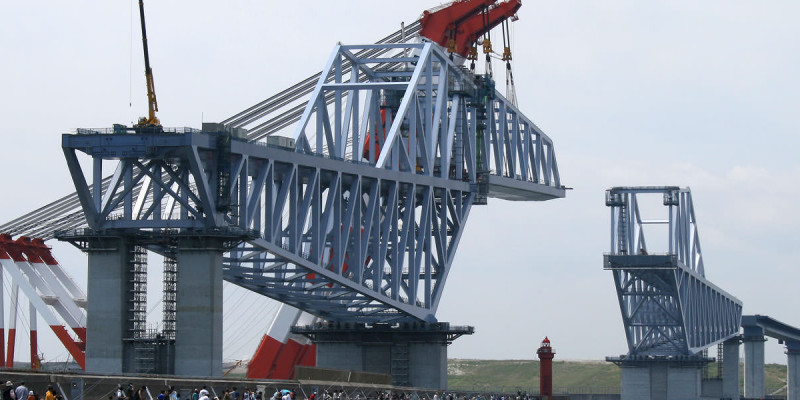With new bridge-building materials, industrial production methods, and an efficient construction process, it will be possible to start using a bridge only two weeks after construction starts on the site.
A pilot study of the new bridge concept, the i-bridge, is included in Peter Harryson’s doctoral dissertation in concrete construction at Chalmers. The bridge consists of extremely light sections that are assembled on site. The load-bearing parts consist of v-shaped fiberglass beams that are reinforced with carbon fibers on the underside. The beams interact with a thin bridge deck that is prefabricated out of steel-fiber-reinforced cement with extremely high strength. Since these materials are very durable, they are advantageous in a life-cycle perspective, and they are highly suitable for industrial construction. However, these materials are not in use in the new construction of bridges today.
“The new bridge type is a construction that projects several years into the future, but the study shows that it would be technologically possible to build this bridge today if the concept is further elaborated,” says Peter Harryson. “However, at present the economic conditions are constrained by the major investments that would be needed to start production, and by the high prices for fiber-composite materials.”
Today the new type of bridge is estimated to cost more than twice as much as a conventional bridge. But the economic potential of the bridge concept can be enhanced considerably if the economic calculations are done in another way. Besides the shorter construction time, there are several advantages both from a life-cycle perspective and in terms of the working environment that could be valued higher.
The project has been part of (the Swedish Governmental Agency for Innovation Systems) Vinnova’s research program “Road, Bridge, Tunnel.” Peter Harryson has been an industrial doctoral candidate with the Swedish Road Administration, which has provided funding.
The dissertation, titled Industrial Bridge Engineering – Structural developments for more efficient bridge construction, was publicly defended on May 29.

